啜一口甘甜清爽的台南紅茶,抬頭環顧四周環境,一座近 2 公尺高大的合成器聳立在眼前,一旁則是一台神秘的天線樂器特雷門,轉身一瞥,又是幾台年代久遠的經典合成器 Minimoog,隱藏在斗櫃下方的據說是為星際大戰一角 — R2D2 配聲的合成器 ARP2600。手上這杯紅茶可要拿穩了,打翻了可會造了幾世的罪孽。目前我所在的空間,是章世和的個人工作室(以下稱章世和為 Seho)。
Photo1: Seho 的模組合成器與特雷門,photo by Seho。
Seho 是台灣知名的類比合成器演奏家、特雷門演奏者、編曲人與製作人,目前隸屬三川娛樂,1998 年因參與黃鶯鶯〈為愛瘋狂〉專輯編曲,而開始踏入流行音樂圈,作曲與編曲獲得許多獎項與好評。在 2013 年時,Seho 與吳羽軒(J. Wu)組成〈師子吼〉佛教音樂創作團體,專輯〈1/84000〉曾獲 2014 第廿五屆金曲獎「最佳新人獎」入圍與第五屆金音獎獲 5 項入圍,專輯中〈84000〉一曲,一聽令人寒毛直豎,也獲得當屆「最佳電音單曲」!
奔跑,為了看 拯救生命 (Live Aid) 電視轉播的少年
1985 年 7 月13 日 〈拯救生命 (Live Aid) 〉慈善募款演唱會,可說是眾星雲集,其中相當受人注目的樂團〈Simple Minds〉演奏 〈Don't You (Forget About Me)〉,對一位急奔回家的少年來說可是重頭戲之一,對他而言,看樂團演出很重要,看是什麼樂器更加要緊!這是 Seho 一段印象深刻的年少回憶。
Seho 從少年時期一直都對音樂抱持著很大的興趣,曾學習 Bass、吉他等樂器,也經常收看音樂節目與閱讀雜誌來獲取資訊。早期音樂節目像是余光的〈閃亮的節奏〉,經常會播放一些音樂 MV,聲響跟畫面拍出來的琴都相當吸引他的目光。因為組樂團的動力,Seho 開始向於台南相當知名的王啟光老師學習 keyboard ,然而第一堂課不是彈奏或是學習樂團的歌,而是劈頭一個專有名詞 VCO,再來是把琴鍵上的旋鈕、功能講了一陣。這對一個合成器新手是有聽沒有懂的一課,但他仍然感到相當興奮,因為合成器能產生的音色太豐富了!直至 Seho 拿到的第一把琴,他仍然保有「師承」的態度,先是亂調音色一陣再彈琴。這幾年,Seho 的手傷情況較為嚴重,漸漸變得比較少彈琴,但同時玩合成器的時間卻變多了。
Photo2: Seho 拍攝朋友家的合成器,photo by Hong Chi。
合成器 X 特雷門 X 雜誌時代
Seho:「那時候我們都到高雄去,因為高雄有兩、三家樂器行有台南沒有的琴,因為他們是台南那邊的總代理,我會去那邊看琴,看了覺得琴閃閃發光,因為那個年代的琴很貴。」
在合成器出現之前,鍵盤手的選擇只有三樣東西,一個是鋼琴、另一個是電鋼琴,要不然就 organ (電風琴),合成器為鍵盤手創造了新的選擇。然而在一個數位剛開始起步的 80 年代,資訊獲得非常的少,幾乎只有一種能大量獲得鍵盤與合成器的知識,即是日本跟美國的 keyboard 雜誌。這兩國雜誌風格大不相同,美國屬於單純敘述的文章與圖,而比對剛從櫃子深處找到的那本日本雜誌,封面印有年輕時期的坂本龍一,也正如 Seho 所說,劃分多樣主題與專訪,圖片與文字含量都很豐富,不僅琴的種類完整豐富,也提供參數調整的教學,Seho 接著表示,那些年僅能看到 M1、D50等等,屬於較為平價的商品,經典款僅能在雜誌上看見。或許是受到雜誌影響,又或許是因為聆聽過往搖滾樂團的音樂,他逐漸對於那些琴產生出來的聲音感興趣,特別像是 Moog、 Oberheim 等琴種。
Photo3: Seho 邊說明,邊翻閱日本雜誌,photo by Hong Chi。
Seho:「我那時才高中吧,台灣根本沒有那種琴,看看雜誌,心想我有一天一定要把他們買回來,經過快 20 年才有這些(指著 Minimoog、TB-303、ARP 2600 與 MS-20)。」多年後,〈Simple Minds〉當年演奏的 OB-8 合成器也終於購入。
大概在五年前,Seho 才開始認真玩模組合成器,受過去樂團影響,他開始用 MU (Moog Unit)系統的合成器。MU 這種規格的合成器源自 Moog 開發的合成器,業界以模組高度不同而作區別,又被稱為 5U,Seho 指出許多玩 MU 都比較 Berlin School,像在 DigiLog 的許多朋友玩 Eurorack 比較多, Eurorack 音樂性質也比較偏 electronic、techno 與實驗性質。
在台灣論及特雷門,便會聯想到 Seho,這兩年來他開始講課並致力於推廣特雷門。特雷門過往僅能在雜誌上看得到,文字描述著「不用碰到就可以產生出聲音的樂器」。雖然知道特雷門已經有好幾年了, Seho 仍然很好奇這樂器是怎麼運作的,一直到網路發達之後,他從美國訂了 Clara Rockmore 的 CD 回來,一聽之下感到非常驚人,但也說不出好聽還是難聽。這種奇怪的感受並不減其魅力,所以 Seho 在 2000 年買了一台,並透過網路教學方法與教科書的資料掌握其訣竅。
Seho:「聲音吧!其實特雷門跟合成器(硬體合成器)在技術面上、或是他們追求的東西上有一個共同點是 pure, 這個 pure 可以分兩種,一種是很純粹的聲音表現,一種是它的控制。那我透過很多控制的方式,來得出一個我內心裡認為的純粹的聲響,這兩個是一樣的。」這是 Seho 答覆我著迷於合成器與特雷門的原因,他也特別點出演奏特雷門的動作是非常細膩的,對身體與心靈條件要求很高,無法達到要求,就難以穩定的演奏。
進入流行音樂圈與〈師子吼〉的成立
Seho 退伍之後,仍然繼續玩樂團、做現場表演,但也有新的發展,他跟著鍾興民老師與涂惠源老師學了編曲,這段期間,另一個很重要的練習是做B版音樂,也就是接伴唱帶音樂的案子,製作B版音樂得知道一首歌裡面的配器、bass、吉他、鼓跟旋律等等,而且需要拷貝得很像,因此練就了兩耳朵的好功夫。經歷了許多磨鍊,也開始累積了一些作品,Seho 在製作黃鶯鶯那張專輯之後,音樂圈的人也漸漸地認識他了。
我問 Seho 那開始進入流行音樂圈之後,商業歌曲跟自己所做的創作狀態有很大的不同嗎?Seho 說:「在那個年代,比較主流歌曲... 說芭樂歌好了啦,但那不是我的擅長,我的擅長是做一些有個人特色的東西,像〈為愛瘋狂〉那首,我的第一首編曲是 Drum and Bass ,不是一般的流行歌,雖然流行歌我們都會編沒有錯,但我比較擅長做一些在那個年代比較新或者是 Hip-hop 的歌,像以前跟大支、熱狗合作都屬於較新的類型...,所以一開始進入編曲時,在某個程度上就會有一點點的自由度,我希望啦,就是做一些比較特別的東西,客戶偶爾會接受,那大部分的時間是不接受的...(略)沒關係啦,商業編曲本來就是這樣,如果不接受也沒關係,我會在裡面偷偷放一些比如說 synthesizer 呀,他聽不出來就算了,但自己會很開心,比如說放個 bass,我不是用 digital 的 bass,我是用比如說 Minimoog 的 bass… 就在這種地方找點小樂趣。」
Seho 做商業案之餘,自己也有純屬創作的團體 ——〈師子吼〉,團體成立原因非常隨緣,一次吳羽軒 (J. Wu) 前來探訪 Seho,聊到佛教流行歌曲似乎仍是在念經階段,給大家的感覺只停留在傳統的氛圍上,但也因此有很大的空間去做些大膽的嘗試。語畢當日, Seho 立刻用合成器彈了 〈心經二六八〉 一曲的和弦、吳羽軒則花 15 分鐘寫完唱的曲調,並立刻錄了 rough 的歌唱部分,此刻如同打靶射中紅心一般,準確地命中他們想完成的目標,〈心經二六八〉也在經過錄音室之後成為 〈師子吼〉的第一首歌。
師子吼 Simhanada|心經二六八 歌詞篇 (Heart Sutra 268 lyrics video)
Seho:「我們一開始做沒有特殊的企圖,因為他(吳羽軒)信佛,我也是一般的佛教徒,我覺得這樣做音樂還蠻新鮮的,整張專輯做完之後,忽然想到可以報名金曲獎噎,到底是要報流行樂還是傳統歌曲類? 他 (吳羽軒)回說,這是流行歌啦!當然是流行音樂類!」
〈師子吼〉另一首 〈84000〉曾榮獲「最佳電音單曲」,在 1 分 46 秒出現了用 Minimoog 做的聲音,令人相當驚艷, Seho 補充說道:「說老實話,這首歌若不是 K哥 Mixdown 的話,也不會這麼厲害...(略)我原來編的東西就有那個佈局在,可是他 Mix 完,超新鮮的感覺,把整首歌提升到另一個層次,真的很厲害,原本的畫面感沒有這麼的強烈,像是一般的電影變成 3D 電影的感覺。」
師子吼 Simhanada|84000
〈師子吼〉有許多好聽的歌曲,但近期很難聽見新作品的機會,Seho 說:「裡面的東西是我到一個時間點的總結,其實這是創作人對自己的一個交代,我會這些東西、我喜歡這些東西,然後我把這些東西,以〈師子吼〉這個團體來做一個總結,從那個時候(專輯製作出來),所以在還沒找到新的話要說之前,〈師子吼〉近期沒有新的動作。」
近年,Seho 仍然持續地玩合成器與特雷門,先前做了許多分享講座,他表示,同學們與他當時學習環境不同,但是這些合成器的聲響是不會變老的,20歲出頭的年輕人碰到合成器仍然相當感興趣,介面呈現的情感與互動是會跟人產生很大的連結,這跟使用軟體有很大的差異。
Seho:「你們曾經聽過這樣的聲音,你們一定要記得它,你以後有機會再遇到這樣的聲音,你一定要認得它,因為這才是有溫度的聲音,才是純類比的聲音。」
在課堂上,這是 Seho 一定會叮嚀的一句話。
cover: Seho, photo by Hong Chi.
Seho 網站:www.seho303.com.tw
Turning Analog Synthesizers into Verses for the Soul - An Interview with Chang, Se-ho
English translated by Jiang Jie-ting.
Took a sip of sweet but refreshing Tainan black tea, then raised my head to look around, a nearly 2 meters high synthesizer stood in front of my face with a mysterious antenna instrument, theremin, next to it. Turned my head to the other side, I saw some elder but classic synthesizers such as Minimoog, and the one hidden in the box under the chest of drawers is said to be the synthesizer for the voice of a Star Wars character R2D2, ARP2600. Not daring to imagine what would happen if I accidentally spilled my black tea, I got to hold it tight. The place I was visiting is Se-ho Chang’s personal studio.
Se-ho Chang (hereinafter called “Seho”) is a famous Taiwanese analog synthesizer artist, theremin artist, music composer, and music producer, who currently works in Kawamusic. Participating in the composing of the Tracy Huang’s album Crazy for Love in 1998, he entered the pop music industry. His works and composing has gained him many reputations and awards. In 2013, Seho and J. Wu started Simhanada, a Buddhist music band. The album 1/84000 was nominated the “Best New Artist” of the 25th Golden Melody Awards and got 5 nominations in the 5th Golden Indie Music Awards, and won “Best Electric Single” because of the skin-crawling song 84000 in the album.
A teenager runs for the broadcast of Live Aid
Live Aid is a charity fundraising concert held on July 13th, 1985. It was stacked with stars. For a teenager rushing back home, Don't You (Forget About Me) played by the well-noticed band Simple Minds was a must-see of the night. For him, it was important to watch a band performance, but watching “what instruments are played” was even more important! This is an impressive memory of Seho from his young days.
Seho has been interesting in music since teenage years. He was learning bass, guitar, and had been watching music shows and reading magazines to obtain information often. Early music shows such as Kuang Yu’s Shining Beats plays music videos quite often, in which the sounds and filmed instruments totally caught his eyes. Having a motivation to start a band, Seho began to learn from a well-known keyboard teacher in Tainan, Chi-kuang Wang. However, the first lesson was not about playing instruments or learning band songs, it was the introduction to a proper noun “Voltage-controlled oscillator”, and then it was the introduction to the knobs and functionalities of a keyboard. It was a lesson hard to follow for a newbie in the world of synthesizers, but he was excited, the timbres that synthesizers can generate are so rich! Until Seho got his first keyboard, the attitude inherited from his teacher was still remained, which is “mess timbres up first then play”. In recent years, Seho’s hand injury becomes more severe, so he plays keyboard less often while having much more time for synthesizers simultaneously.
Synthesizer X Theremin X Magazines
“We always went to Kaohsiung, because there were 2 to 3 instrument stores selling keyboards which were not sold in Tainan. They were exclusive agents for the stores in Tainan, so I went there for keyboards. To me, those keyboards were shining because keyboards were very expensive in that era.” Said Seho.
Before synthesizer was invented, keyboarders had only three options, piano, electronic piano, and organ. The invention of synthesizer created a brand new choice for keyboarders. However, in the 1980s, when digital products just started to be adopted, the information was very little. The only way to obtain a lot of knowledge for keyboards and synthesizers was reading the Keyboard magazine from Japan and the US. The Keyboard magazine from Japan and the US differ in styles, the US version contains only simple illustrative articles and pictures, while the Japanese version, take the one taken from the depths of the cabinet and having young Sakamoto Ryuichi on its cover as an example, contains articles, interviews, and pictures in various topics. Moreover, it not only introduces many more keyboards but also provides tutorials to parameter adjustment as Seho said. Seho then said, only M1, D50 could be seen in life in those years, which are price-friendly models, and classic models could only be seen in magazines. It might be the influence of the magazine, or it might be the music from rock bands he was listening to, he was gradually interested in the sounds produced by those keyboards, especially models from Moog and Oberheim.
“I was in high school, you couldn’t find such models in Taiwan at the time. I was reading the magazine, and telling myself, I have to get these one day! Almost 20 years later I have them.” (pointing at Minimoog, TB-303, ARP 2600, and MS-20) Said Seho. Many years later, he purchased OB-8 as well, which was the model used by Simple Minds.
About 5 years ago, Seho began seriously in playing modular synthesizers. Influenced by bands he was listening to, he uses MU (Moog Unit). Such type originates from synthesizers developed by Moog and is also as known as 5U in the industry, which is named after the height of the module. Seho pointed out that many who play MU are more “Berlin School”. Friends of Digilog play more Europack, from which music styles are relatively electronic, techno and experimental.
Mentioning theremin in Taiwan, you would come up with Seho. Since two years ago he has been teaching and promoting theremin, which used to be only be seen on magazines with a description “An instrument can generate sounds without touching.” Although Seho had been knowing theremin for years, he was still curious about how it works. After the internet was common to everyone, he ordered Clara Rockmore’s CD from the US. It amazed him, but he could not tell whether it is good or not. Such strange feel did not diminish its charm, so Seho bought one theremin in 2000 and through the tutorials on the internet and textbook materials to grasp the knack.
“Sound I think. Actually, in terms of techniques or the goals theremin and synthesizer are pursuing, they have one thing in common, which is “pureness”. This “pureness” embodies in two ways, one is through the sound, and the other is through the manipulation. When I use many manipulations to get a pure sound in my heart, these two things are identical.” This was Seho’s reply for why he is so fascinated by the synthesizer and Theremin. He also pointed out that the action of playing Theremin is very delicate. It is very demanding on the physical and mental conditions. If requirements are not meet, it is difficult to achieve a stable performance.
Entering Pop Music Industry and the Start of Simhanada
After finishing the obligatory military service, Seho continued to play bands and make live performances, and he also had a new development - learning composing from Baby Chung and Michael Tu. During the time, a very important practice for him was making adopted music (called type-B music in Taiwanese music industry). To make adopted music, one needs to know the orchestration, bass, guitar, drum, and melody in a song, and one needs to copy it as identical as possible, so he has practiced a pair of sharp ears. After making the album of Tracy Huang, he began to accumulate some works, and people in the music industry gradually got to know him.
I asked Seho, does he have a very different status, when composing commercial songs and his own works? “In that era, they (commercial songs) refer to mainstream songs or let’s just say cheesy songs. But that is not my strength. My strength is making something has personalities, like the song Crazy for Love. My first composing was a Drum and Bass , which was not a regular pop song. Although we all knew how to compose a pop song, I was better at composing something new in that era, such as the hip-hop songs I worked with Dwagie and MC HotDog. Therefore, when I start composing, to some extent, I have some freedom. I mean, I hope to make something special, and my customers accept them sometimes, although they don’t in most of the time… It’s fine, this is composing for commercials, it’s okay to be rejected. I sometimes smuggle some plots made of a synthesizer for instance, and it’s fine if she/he cannot find them out, I’m delighted anyway. For example, I can put a bass in it, I don’t mean a digital bass but a bass from Minimoog for instance. Just have a little fun for me.” Seho answered.
Besides working on commercial cases, Seho has his own band, Simhanada. Nature ran its own course and brought the start of Simhanada. It was once J.Wu pays Seho a visit, they talked about Buddhist songs, which were more like just chanting and very conventional. They thought there might have a large room to make some bold attempts. Soon in the day of the conversation, Seho played the chord of Heart Sutra 268 with a synthesizer and J.Wu wrote the tune in 15 minutes and recorded a rough singing part immediately. The moment was just like shooting right on the target precisely, the target they wanted to achieve. After processed in the studio, Heart Sutra 268 became the first song of Simhanada.
“We didn’t have any special intention in the beginning. He (J.Wu) is a Buddhist, I’m a Buddhist, too. I thought it’s fresh to make music like this. After we’ve finished the album, we found that we could submit it to the Golden Melody Awards. But which category should we submit it to? Popular music or traditional music? “Of course pop! Category of popular!” He (J.Wu) answered.” Said Seho.
The other song 84000, which won “Best Electric Single” in the Golden Indie Music Awards, has a pretty amazing plot made of Minimoog starts from 1:46. Seho said “To be honest, it wouldn’t be that good if the mixdown were not done by brother K… My composing had already a layout, but it was even fresher after his mixing. He totally brought the song to another level, super awesome. It was not that scenic initially, and it (brother K’s mixing) was like turning a regular movie into a 3D movie.”
Simhanada has many great songs, but it is not likely to be able to see their new releases in the near future. “They (works of Simhanada) were a summary of the time for me. It (a creation) is actually a statement for a creator her/himself. I know these things, I like these things, so I summarized these things with a band called Simhanada. Since then (the moment the album was finished), I’m done with it. I cannot do it now, totally not able to. It is difficult to see new releases shortly. No release before I find a new topic I want.” Seho said.
Despite Simhanada will not have new releases shortly, Seho still keeps playing synthesizers and theremin and has held many workshops. Seho said that the learning environment of the students nowadays is different from his, but the sound of these synthesizers will never grow old. A 20 years old young person still finds a synthesizer interesting. The emotions and interactions presented by the interface have a great connection with people, which is very different from the use of any software.
“You must have heard a sound like this, and you must memorize it. If you have a chance to encounter a sound like this, you must recognize it. Because this is the sound of temperature, this is the pure analog sound.” This is a sentence that Seho always says in his classes.
cover: Seho, photo by Hong Chi.
Seho’s website: www.seho303.com.tw








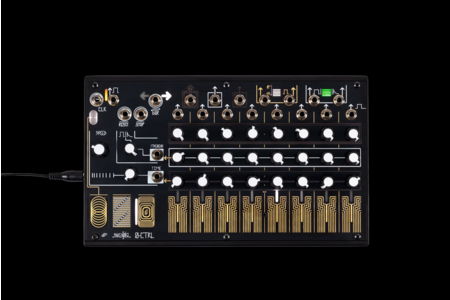
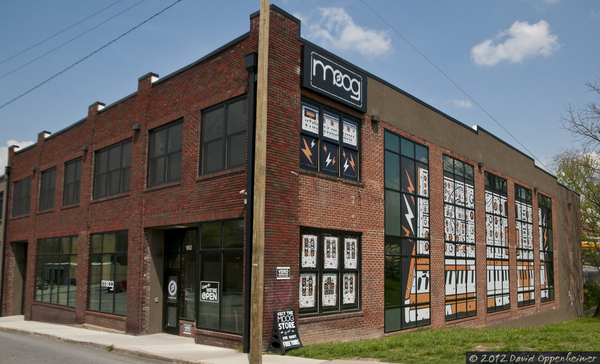




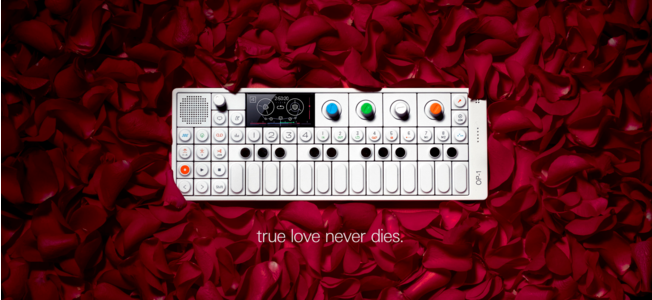
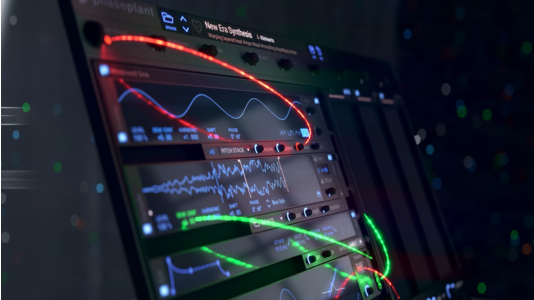




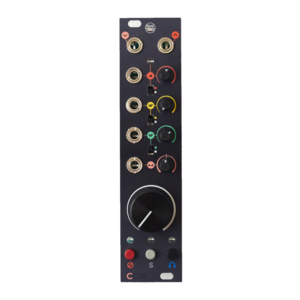




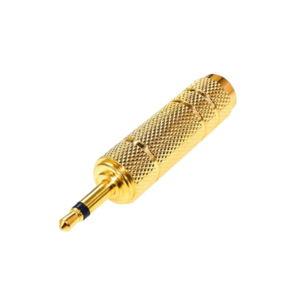
討論區
目前尚無評論